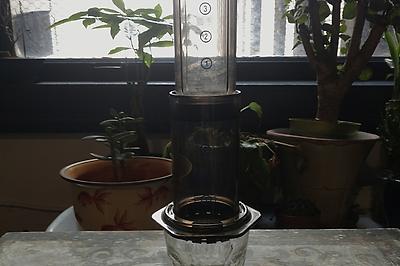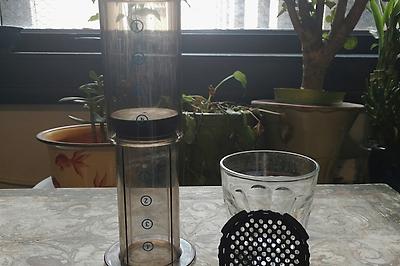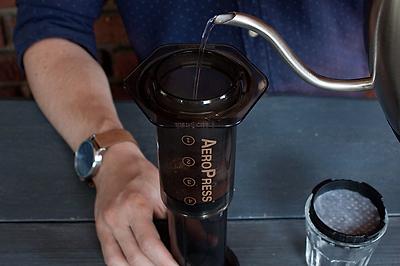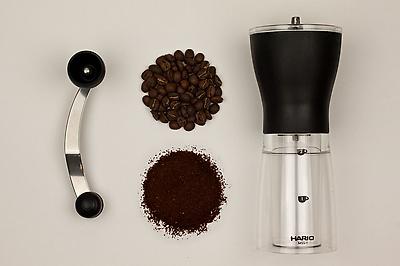Aeropress: In-Depth
Ever wondered why the Aeropress is so popular, and how it works? We'll lay out the details, plain and simple.Chances are, if you’ve been on the specialty coffee scene in the last few years, you’ve used an Aeropress . For the uninitiated, the Aeropress is a brewing system created by Alan Adler, (the same engineer that created the Aerobie flying ring, go figure). Since its launch in 2005, the Aeropress has quickly become a favorite method for preparing coffee due to its portability, ease of use, and the degree of control it gives the brewer over the final cup. Every extraction with an Aeropress is clean, simple and yeilds impressive quality that we've come to depend on. In fact, Aerobie holds a worldwide Aeropress championship, where they award the best cups of coffee to come out of an Aeropress in any given year. But what makes one Aeropress-ed cup better than another? What changes can affect the outcome of your brew? We’ll break down some of the basics.
Standard Method vs Inverted Method
This is probably the biggest difference that can be made when brewing, and devoted Aeropress users typically have strong opinions about which method is best.

The Standard Method involves placing your Aeropress over a cup filter-side down, adding your coffee over the filter, pouring water into the Aeropress, stirring, and then extracting by pushing down on the plunger. This is the method that Aerobie vouches for.

The Inverted Method is just that: inverted. You start by setting the plunger in chamber, and placing the Aeropress filter-side up. Then you add your coffee and water, and attach the filter. Then you place your cup over the top of the filter, flip the whole apparatus over, and extract by pushing down on the plunger.
So what’s the difference? With the Standard Method, water will start to drip through the filter as soon as you pour it into the Aeropress. With the Inverted Method, water won’t drip through the filter until you flip the Aeropress over. This means that with an Inverted Method, you can achieve a longer extraction time for your brew.
Time
Speaking of longer extraction periods, let's talk about time. How long your coffee is submerged in hot water will affect the flavor. Extraction too short, and your coffee will taste sour and weak. Too long, and your coffee will taste bitter and murky. Aerobie maintains that the Aeropress is designed for a quick cup of joe, but different recipes call for different extraction times.
Temperature
Water temperature also changes the taste of a cup of coffee. When the water is too hot, it will over-dissolve the flavor compounds that make coffee tasty. If the water isn’t hot enough, you won’t be reaching your coffee’s full potential. This is why serious coffee folks use kettles with thermometers built in.
Grind Size
Grind Size also affects your cup, especially in an Aeropress. When coffee grounds are fine, they have a larger surface area, which changes the speed at which flavor is extracted from the grounds. In an Aeropress, a finer grind will also increase resistance and relative pressure while you’re pressing down on the plunger.
So What's The Perfect Mix For Aeropress?
All of these different elements are interrelated. Finer grind means it’s harder to press the plunger, which means a longer extraction time by default. Less total water means less time for extraction, depending on how quickly you press the plunger. It gets complicated really quickly, which is part of what makes the Aeropress so fun to experiment with, and why there are so many different recipes. Which one’s the best? We’ll leave that up to you. Here’s what some of the experts think:
- Lukas Zahradnik, Slovakia, 2015 Aeropress Champion
- Inverted Method
- 20g coffee ground at 7.3 on Mahlkonig EK34 Grinder
- Heat water to 79℃ (174℉)
- Add 60g water
- 15 seconds of turbulence
- 30 second bloom
- Add 170g water over 10 seconds
- Plunge 45 seconds
- Shuichi Sasaki, Japan, 2014 Aeropress Champion
- Standard Method
- 16.5g coffee ground at 9.5 on Mahlkonig EK34 Grinder
- Heat water to 78℃ (172℉)
- Add 40g water
- 25 second bloom
- Stir 5 times
- Add 210g water
- Stir once
- Plunge 75 seconds, leaving 45g of slurry in the press
- Jeff Verellen, Belgium, 2013 Aeropress Champion
- Standard Method
- 17g coffee ground at 5.75 on the Uber Grinder
- Heat water to 83℃ (181℉)
- Add 50g water
- 40 second bloom
- Agitate Aeropress to wet all grounds
- Add 215g of water at 79℃ (174℉) over 30 seconds
- Plunge 30 seconds, leaving 50g of slurry in the press
More Brew Guides For Aeropress
Looking For Coffee To Aeropress?
Let us ship you fresh roasted single-origin coffees from around the world straight to your door! Check out our free trial to receive a free bag and get brewing!


